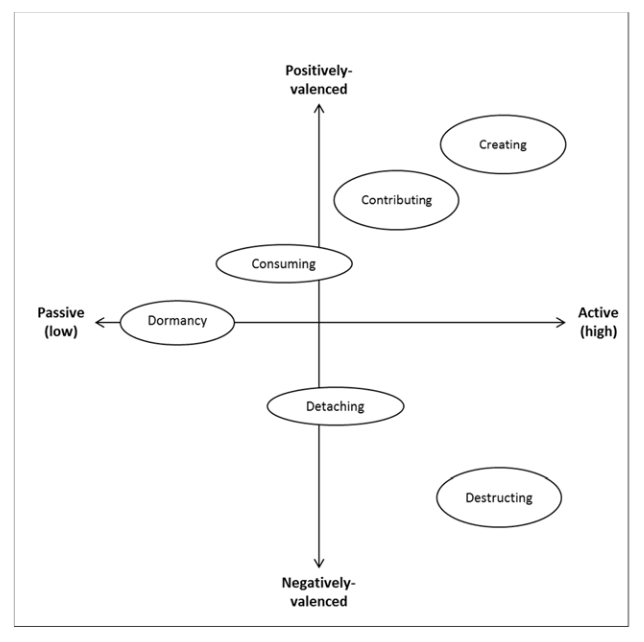Chapter 12: Digital Media and Communications
80 Online Engagement
The key differentiating factor between traditional and digital media is the ability to interact, or engage with the communicator, and others in a community. Think back to the basic process of communication: the messenger (encoder) sends a message through a medium, which is received and decoded by an audience. In traditional media, the process was primarily one-way. In digital media, users have the ability to interact and respond to the message — in other words, they can ‘engage’ with the message and messenger.
But why are people drawn to digital communication? For the answers to this question, you might consider Maslow’s hierarchy of needs, which provides you with an understanding of the motivation that might be behind online engagement. Although engaging online doesn’t really satisfy physiological or safety needs, it certainly speaks to the other categories in the hierarchy as see in Figure 12.1 below:
 Figure 12.1. Maslow’s Hierarchy of Needs. Illustration by Factoryjoe is shared with a CC BY-SA 3.0 license
Figure 12.1. Maslow’s Hierarchy of Needs. Illustration by Factoryjoe is shared with a CC BY-SA 3.0 license
Examples from social and digital media paradigms:
- Love and belongingness needs: engaging online can provide a tremendous feeling of being accepted. Online communities grow friendships, intimacy and a feeling of affiliation.
- Esteem needs: Engagement from friends, colleagues and even strangers can feed the desire to improve one’s reputation or gain respect.
- Self-actualization needs: Digital media is full of examples of people who are working to realize their personal potential, “to become everything one is capable of becoming” (Maslow, 1987, p. 64).

Read the following web article that provides a deeper exploration of social media and Maslow’s hierarchy of needs: The Hierarchy of Needs for an Engaged Social Media Audience.
Social Media Engagement Behaviour Typologies
New research is emerging to explore how and why users engage online, particularly in business. A study by Dolan, Conduit, Fahy and Goodman (2015) broke down customer (user) experiences with social media, based on intensity of activity (low/passive to high/active), and the valence, or emotional force, of the contributions (negative to positive). Figure 1 from the authors’ work below provides a visual demonstration.

Co-creation: this is the highest level on the matrix, in which users are earning, sharing, advocating, socializing and co-developing. They are actively collaborating and developing content and engaging with others.
Positive contribution: users are engaging with content and others, but not necessarily adding content. They may ‘like’ posts, repost, mark as a ‘favourite’ or post a positive comment.
Consumption: this is a passive form on engagement, where users are reading and watching, primarily using social media as a source of information.
Dormancy: these users may have previously been engaged online, but may occasionally be described as ‘lurkers’. They make no contributions nor do they engage online. They have passively disengaged.
Detachment: detached users have actively disengaged with a social media platform, person or brand. They will ‘unlike’ or adjust settings so they do not see information or content.
Negative Contribution: users will make negative active comments to try and influence others to change their feelings or opinions about a brand, subject, person or platform. Negative contributors are often seen posting comments on news articles that will contradict or slander the author (known as ‘trolls’).
Co-Destruction: users will create new negative content with the aim of diminishing the reputation, trust or value of a person/brand/platform. For example, videos or posts created to highlight negative attributes of a politician would be considered co-destructive.
You may notice your own behaviour patterns listed here — and noted that your behaviours change based on multiple factors. As a business professional, you will have to consider your own behaviour type(s), and how you might encourage others to actively and positively contribute to your own brand, organization or company.

